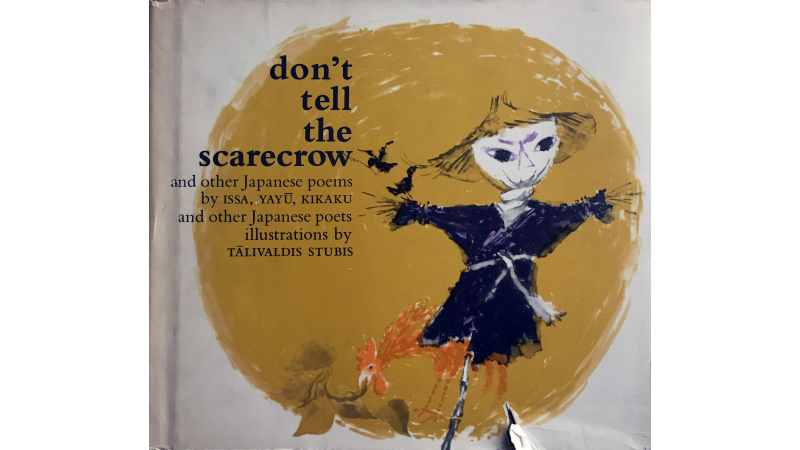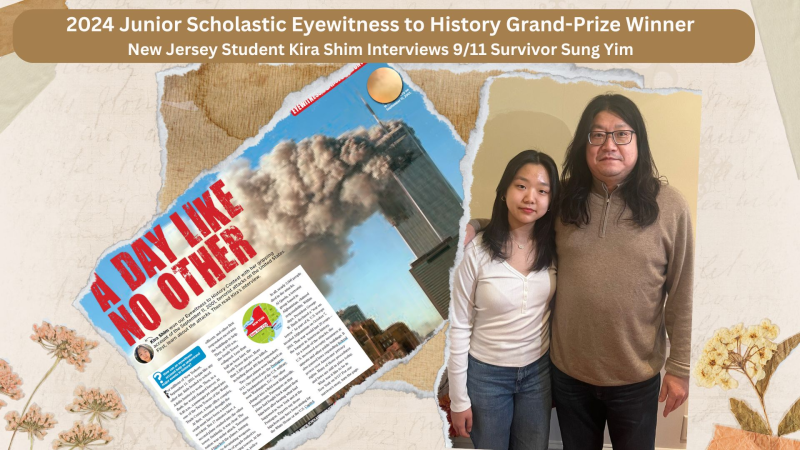May is Asian-American and Pacific Islander Heritage Month. It originally began as a weekly celebration (technically, the first 10 days in May) back in 1979, but then was changed to a month-long celebration in 1992.
For this edition of Throwback Thursday, Deimosa and I found a number of books by Asian authors/illustrators, or books featuring Asian characters for all ages—ranging from folklore to poetry to stories of modern experiences—in the Archives.
Picture Books
Father's Rubber Shoes by Yumi Heo, 1995. (This was originally published by Orchard Books, an imprint that Scholastic would acquire.)
Like many children whose families have moved, Yungsu is unhappy in his new neighborhood. Now his father is busy at his store and Yungsu misses his friends in Korea.
Author/illustrator Heo movingly and subtly reveals the dreams and the traumas of moving to a new land, as seen from a child's perspective. Her simple, poetic text and exuberant collage illustrations suggest that the little things in this big situation—a story about a father's childhood, a meal of bulgogi, a chance encounter with a friend—make a difference.
The Crane Girl by Veronika Martenova Charles, 1993. (This was originally published by Orchard Books, an imprint that Scholastic would acquire.)
Yoshiko is excited at first. She has new baby brother. but her parents became so busy with him that she begins to doubt her own place in their hearts.
Lonely, unhappy, longing for a new family, Yoshiko begs the cranes to take her in. "So be it!" says the leader, and together they swoop and whirl around her in a magical moonlit dance that transforms her into one of their young.
Raised by them, soaring with them, still she remembers her human family and one day swoops down to visit...
The Princess and the Beggar: A Korean Folktale adapted and illustrated by Anne Sibley O'Brien, 1993.
In the walled city of Pyung-yang, just below Peony Peak mountain, lives a young maiden, known to all as the Weeping Princess. But it is for her disobedience that the king banishes his daughter from court. The princess begins a new life with the poor, filthy beggar, Pabo Ondal, and in doing so, makes a discovery about herself. The metamorphosis of the Weeping Princess into the beggar's champion retains the timely feminist perspective of one of the oldest tales in Korean folklore.
The Khan's Daughter: A Mongolian Folktale by Laurence Yep, illustrated by Jean and Mou-Sien Tseng, 1997.
A poor shepard boy wins the hand of the Khan's beautiful daughter in this high-spirited folktale engagingly retold by Newbery Honor Book author Lawrence Yep.
A long time ago, Mongke, a shepherd boy, hears a prophecy that one day he will become rich and marry the Khan's daughter. When he sets out to claim his fortune, the imperial Khan laughs at his presumption and challenges him to carry out three harsh tasks. By luck alone, Mongke defeats seven demons and drives away an army, returning alden with treasure—and boastful. but when he is bested by the mighty Bagatur, really the Khan's daughter in disguise, Mongke finally meets his match, in more ways than one!
Hush! A Thai Lullaby by Minfong Ho, pictures by Holly Meade, 1996. (This was originally published by Orchard Books, an imprint that Scholastic would acquire.)
Lilting verse and bold, whimsical pictures tell the story of one mother's efforts to quiet the animals—from the smallest mosquito to the great big elephant—as their sounds threaten to wake her baby. But is Baby asleep? Let's see who is asleep—and who isn't!
Don't Tell the Scarecrow and Other Japanese Poems by Issa, Yayu, Kikaku and Other Japanese poets, illustrations by Talivaldis Stubis, 1696. (This was originally published by the Scholastic imprint Four Winds Press.)
Coco Can't Wait! A Story About a Girl and her Grandmother by Taro Gomi, 1983. (This story was originally published in Japan in 1979 and translated into English by William Morrow and Company, Inc. Additionally, in the original Japanese version, the little girl is called Yo-chan, which is also the name of the author's daughter.)
Middle Grade
The Royal Diaries: Lady of Ch'iao Kuo: Warrior of the South (Southern China, A.D. 531) by Lawrence Yep, 2001.
The Royal Diaries: Kazunomiya: Prisoner of Heaven (Japan 1858) by Kathryn Lasky, 2004.
The Royal Diaries is a fictional series featuring real historical figures, specifically women of royalty from all over the world.
Finding My Hat by John Son, 2003. (This was originally published by Orchard Books, an imprint that Scholastic would acquire.)
Being different isn't easy. Especially for Jin-Han Park. He has no memories of Korea, but he's growing up with parents who cook kimchee for dinner, read korean newspapers, and don't always understand the ways of young American boys. But somehwere between kimchee and corn dogs, Jin-Han will make a place for himself...
Young Adult
Beacon Hill Boys by Ken Mochizuki, 2002.
Like other Japanese American families in the Beacon hill area of Seattle during the early 1970s, 16-year-old Dan Inagaki's parents expect him to be an example of the "model minority." But unlike Brad, Dan's old brother, who has 4.0 GPA, a college scholarship, and a white girlfriend, Dan is tired of being called "Oriental" by his teachers, and frustrated that no one in his family understands how invisible he feels.
Sharing Dan's anger and isolation are his best friends, Jerry Ito, Eddie Kanegae, and Frank Ishimoto. Together, these Beacon Hill boys struggle to come of age in an America that would continue to see young Asian Americans assimilate rather than stir up the proverbial melting pot. Ken Mochizuki, acclaimed for his unflinching portrayals of the asian American experience, tells a story of friendship, dignity, and discount that will resonate with teens everywhere.
Molly By Any Other Name by Jean Davies Okimoto, 1990.
Molly Jane Fletcher. She's an all-American girl with an all-American family—except for one thing. She's adopted.
And now that she's seventeen, she's beginning to feel haunted by questions about where she came from, why she was given up for adoption, whether she has other family. She has questions about her Asian heritage, questions her parents—who aren't Asian—can't answer. She's beginning to wonder who Molly Jane Fletcher really is.
Molly decides to find the answers. No matter how painful it is for her, for her parents, for the mother who gave her up at birth, Molly has to know the truth. Because only by knowing the truth about her past can Molly feel free to begin a life of her own.
Special thanks to Scholastic librarian Deimosa Webber-Bey for her ongoing help with this series!
Gina Asprocolas






